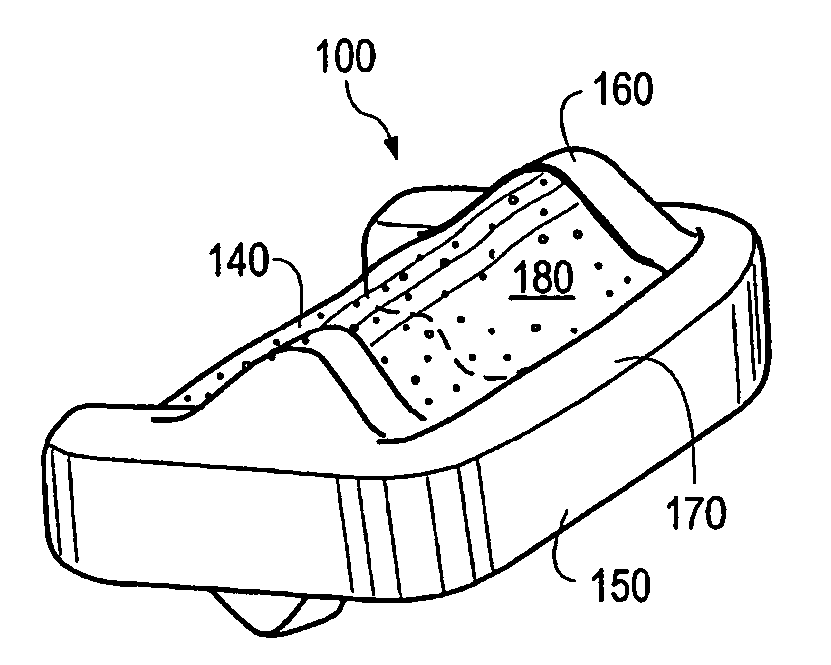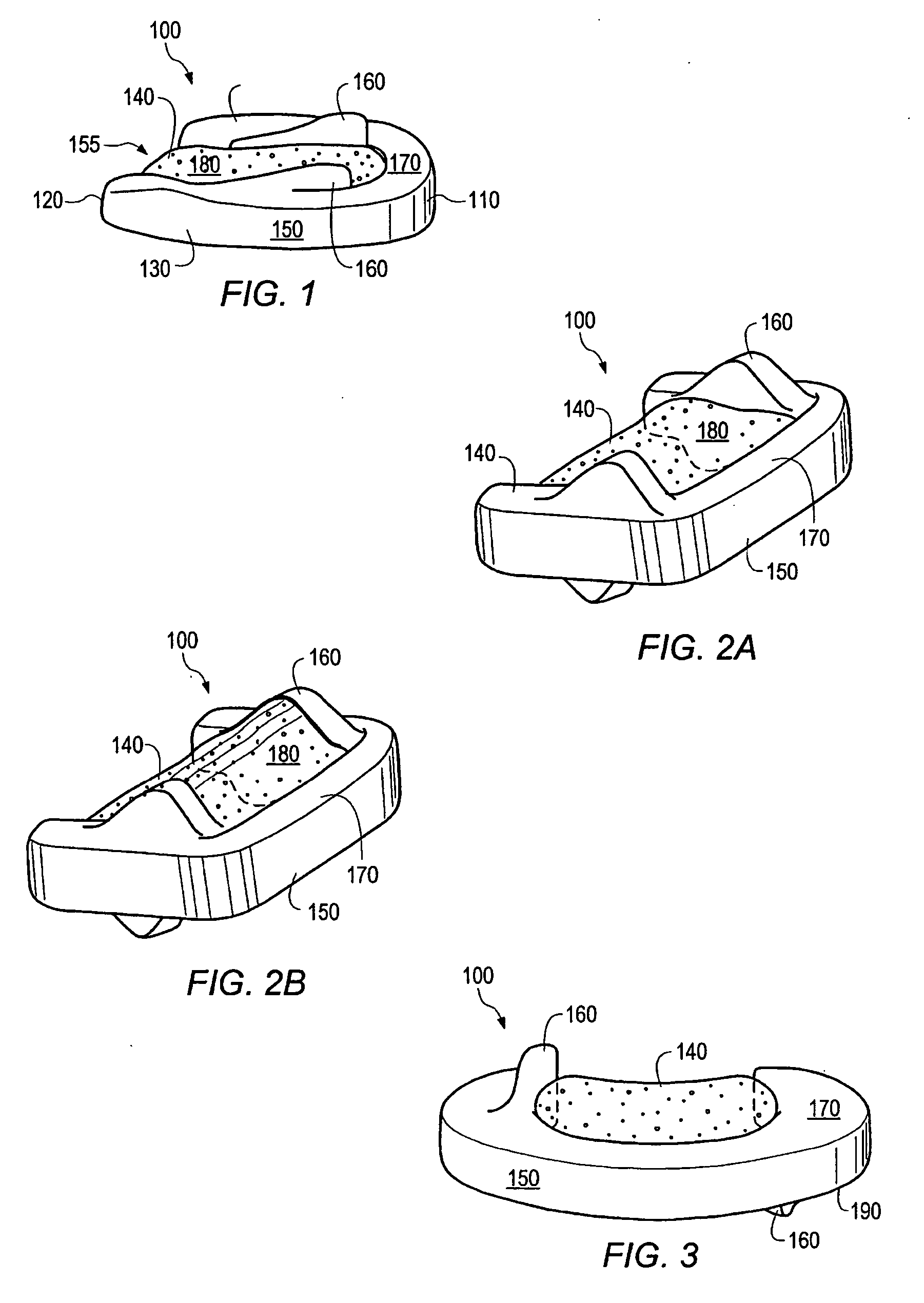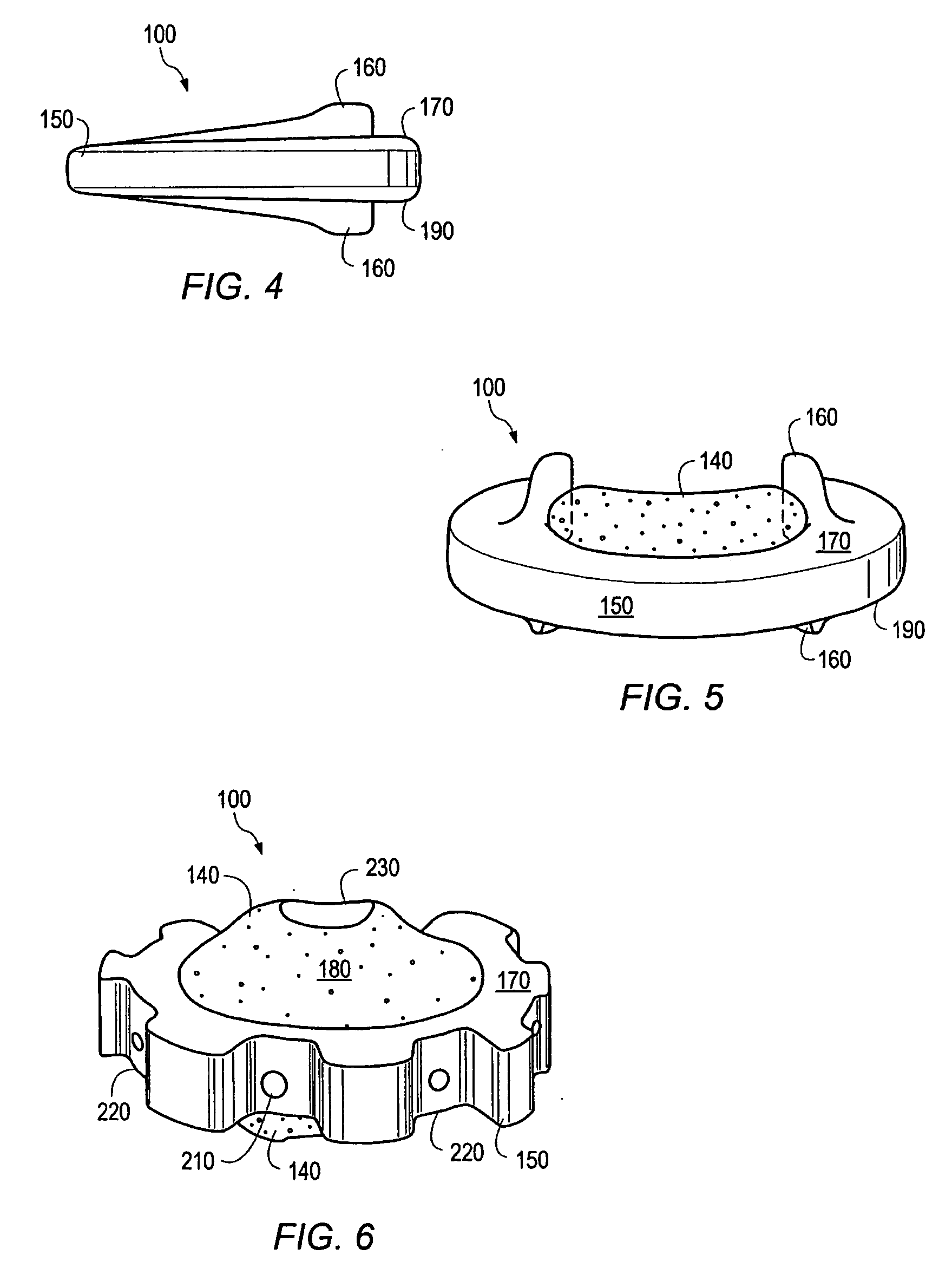Hardened calcium phosphate cement bone implants
a calcium phosphate cement and bone implant technology, applied in the direction of prosthesis, spinal implants, coatings, etc., can solve the problems of lack of compressive strength, inability to use natural bone grafts, and high cost, and achieve the effect of reducing the cost of bone grafts
- Summary
- Abstract
- Description
- Claims
- Application Information
AI Technical Summary
Benefits of technology
Problems solved by technology
Method used
Image
Examples
example 1
Formation of a Hardened Calcium Phosphate Cement Article
[0140] Porous calcium phosphate cement coupons were made by the following procedure. An injectable paste of calcium phosphate cement was prepared by mixing 0.6 g of whiskered TTCP powder (made according to the procedures set forth in U.S. Patent Appl. Publ. No. 2004 / 0003757) with concentrated (NH4)2HPO4 solution in water at a liquid to solid ratio of 0.3 for 1 min. The paste was then thoroughly mixed with a mixture (1:1) of NaCl and KCl salt particles (pore forming powder). The amount of salt mixed with the paste was equal to the dry weight of the salt used to make the paste. The resulting paste mixture was filled into a cylindrical stainless steel mould having a diameter of 12 mm and compressed with a gradually increased pressure up to about 45 MPa and the cement was allowed to harden. The hardened material was immersed in distilled water at 37° C. for 48 hours and dried in air for 24 hours.
Formation of a Nanocrystalline H...
example 2
[0141] The dried material made in Example 1 was immersed in Hank's balanced salt solution 1×, HyQ®HBSS cell culture reagents without Phenol Red, 0.1 μm sterile filtered; HyClone, (Logan, Utah) for 3 days, rinsed with distilled water and air dried for 24 hours.
example 3
[0142] The dried material made in Example 1 was immersed in phosphate buffered saline (PBS) for 5 days, rinsed with distilled water and then dried in air for 24 hours.
[0143] The hardened CPC discs made in Examples 2 and 3 were gold coated and the surface morphology of nanocrystalline HAp was examined using scanning electron microscopy. Representative images are shown in FIG. 1A (samples incubated in HBSS for 3 days), and FIG. 1B (sample incubated in PBS for 5 days). As shown in FIG. 1, a nanocrystalline nanoporous mineral layer was formed after the surface modification with either HBSS or PBS
PUM
| Property | Measurement | Unit |
|---|---|---|
| Porosity | aaaaa | aaaaa |
Abstract
Description
Claims
Application Information
 Login to View More
Login to View More - R&D
- Intellectual Property
- Life Sciences
- Materials
- Tech Scout
- Unparalleled Data Quality
- Higher Quality Content
- 60% Fewer Hallucinations
Browse by: Latest US Patents, China's latest patents, Technical Efficacy Thesaurus, Application Domain, Technology Topic, Popular Technical Reports.
© 2025 PatSnap. All rights reserved.Legal|Privacy policy|Modern Slavery Act Transparency Statement|Sitemap|About US| Contact US: help@patsnap.com



